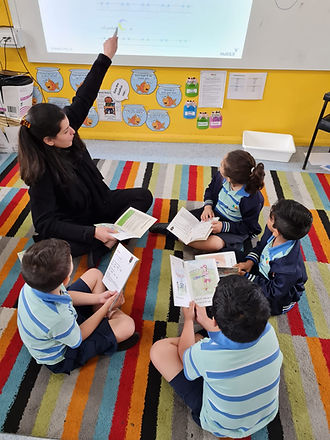top of page
Professional Practice
Standard 5
Assess, provide feedback and report on student learning

Informed Practice Statement
Assessment is an integral part of effective teaching and learning cycle and should be designed to enhance students’ learning. It is a form of data gathering process through diverse assessment types (informal, formal, diagnostic, formative, and summative) aligned to learning objectives and goals as suggested by (Hanna & Dettmer, 2004 cited in Faculty Development and Instructional Design Centre; NSW Education Standard Authority, 2019). Critical analysis of this valuable data allows teachers to continuously modify their practice by evaluating their strategies (selection of content, instructional strategies) for future decision making and also informs students about their metacognitive skills and achievement of learning outcomes.
Incorporating a combination of assessment types would be advantageous for students to assess a variety of skills. Each assessment type has its own advantages and disadvantages and must be aligned to the learning objectives. Formative assessment or ongoing assessment e.g. observations, reflection journals, in class activities and conferences, provides multiple entry points for teachers to assess students’ progress and align their instructional techniques in conjunction with a final goal and also provide opportunities to students to assess and alter their strategies as learners to progress further. This practice allows students to plan for their next step in learning with their teachers as suggested by (NESA) 2019 and benefit from the teacher’s timely and constructive feedback.
Whereas summative assessment is the end of task/project assessment and can be used for reporting purposes (but should not be the only type to consider for this purpose) to students, parents, leadership and colleagues. It is important that this information is accurate, consistent and reliable. NESA (2019) propagates for collaboration with other colleagues to ensure consistency and comparability of data to ensure reliability. Diagnostic assessment on the other hand is used to assess prior knowledge of students and is vital to inform contextualised planning and implementation of learning programs.
It needs to be considered that the impact of assessment and feedback if used purposefully can play a pivotal role to enhance students’ motivation and engagement in their own learning. Therefore, incorporating a range of assessment strategies to evaluate content and competence as suggested by Social Policy and Social Work (SWAP) throughout the instructional experience that allows assessment for (formative), assessment as (metacognitive skills of students) and assessment of (summative) learning and also includes interaction with multiple resources like a teacher, other students (peer assessment) and self (self-assessment) is beneficial for encouraging students to take an active role in their learning (NESA, 2019).
bottom of page